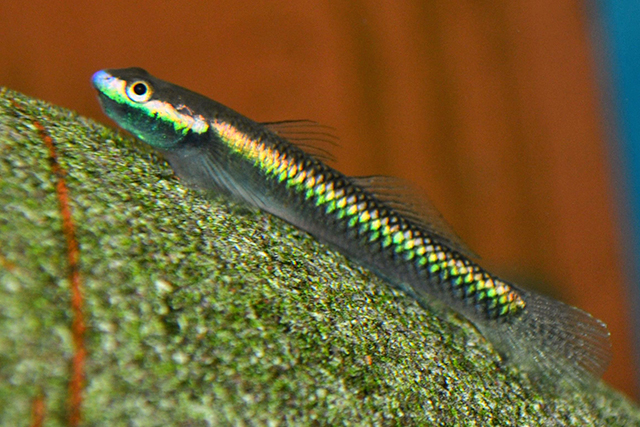| Gobiidae (Gobies), subfamily: Sicydiinae |
| 4.58 cm SL (male/unsexed); 4.2 cm SL (female) |
|
demersal; freshwater, amphidromous |
| Asia and Oceania: Indonesia, Philippines, New Guinea (Ref. 2847) and Solomon Islands (Ref. 26040). Reported from New Caledonia (Ref. 13235). Often referred to as Stiphodon elegans, which is apparently a different species from Polynesia. |
|
Dorsal spines (total): 7-7; Dorsal soft rays (total): 9-9; Anal spines: 1-1; Anal soft rays: 10-10. Second dorsal fin with segmented rays; pectoral fin usually with 15 rays; predorsal midline with cycloid scales, number sexually dimorphic with females having slightly more (usually 5-9) than males (usually 3-5); posterior half of belly with cycloid scales; in males first dorsal fin same height as second dorsal fin, without filamentous spines, patch of white fatty tissue posterior to pectoral base, bright green in life, bright blue immediately after death; brooding and dominant males may have a bright white lateral band; and females with a thin lateral band appearing zigzag like (Ref. 33064). |
| Occurs in small, moderately flowing to swift clear streams with rocky and boulder strewn bottom, usually in sunny areas and has been collected above waterfalls (Ref. 33064). Common in small rainforest creeks, often in hilly terrain, but usually within 30 km of the sea (Ref. 2847). |
|
Least Concern (LC); Date assessed: 16 January 2019 Ref. (130435)
|
| harmless |
Source and more info: www.fishbase.org. For personal, classroom, and other internal use only. Not for publication.

